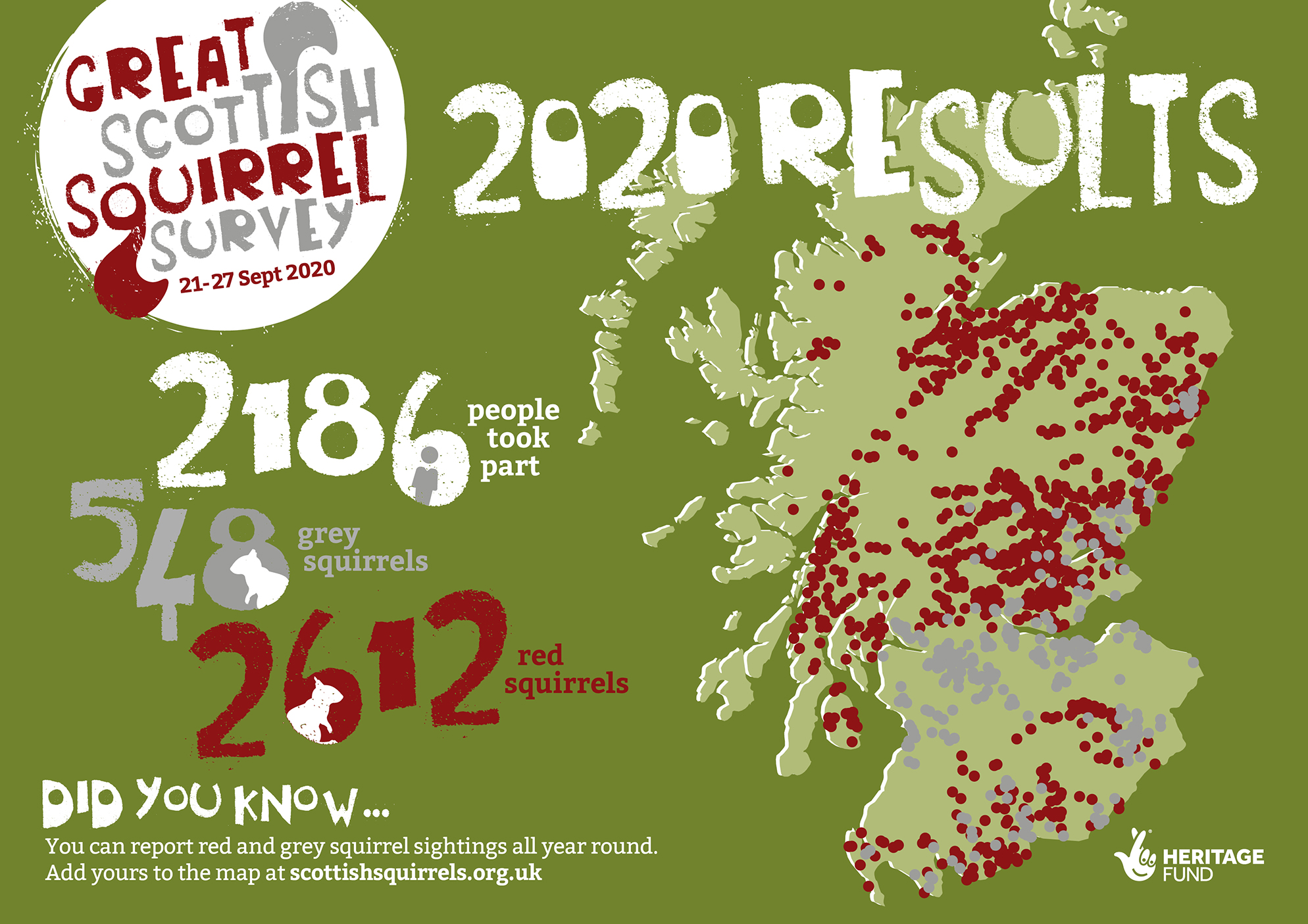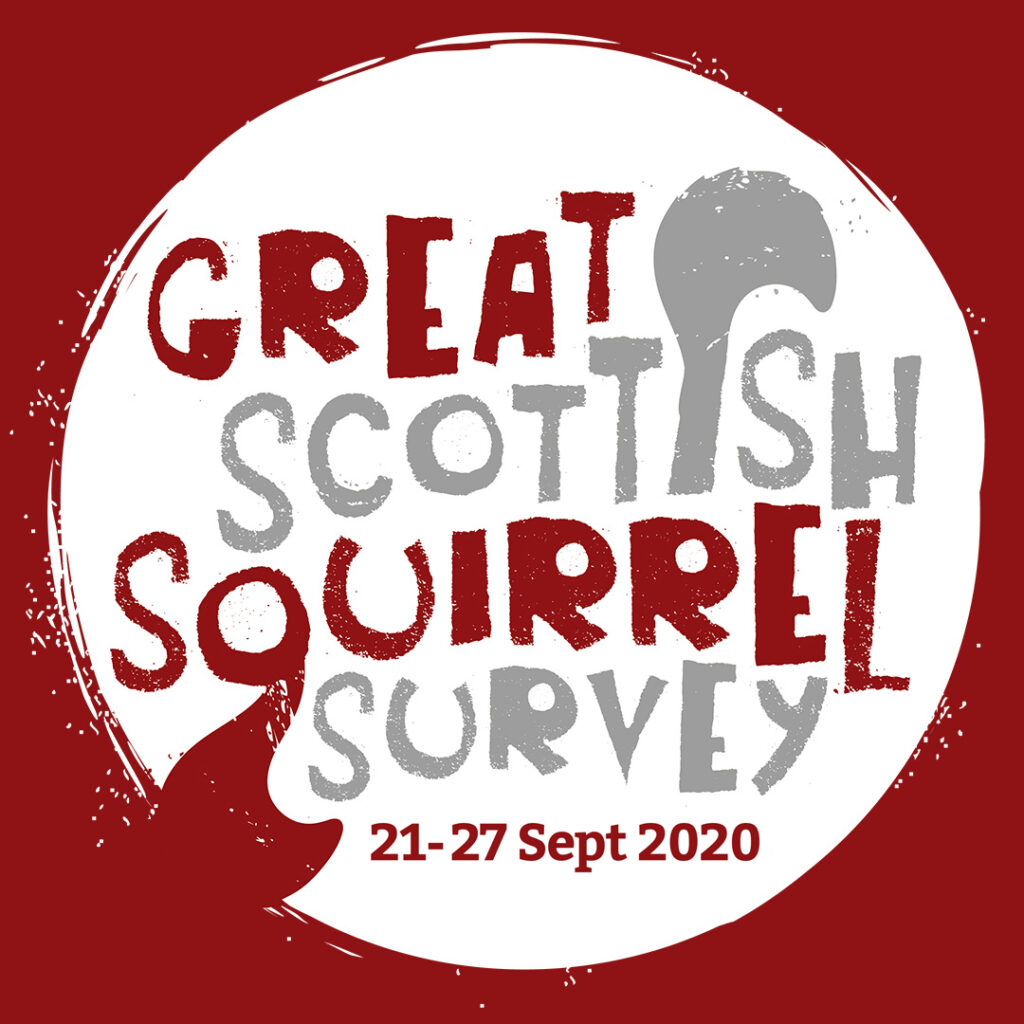A record number of squirrel sightings were reported by the public during September’s Great Scottish Squirrel Survey. 2,100 people – three times the number who took part in the first national survey in 2019 – logged over 3,000 sightings of red and grey squirrels, creating a Scotland-wide snapshot and providing valuable data for conservationists.
The Great Scottish Squirrel Survey returned for its second year this autumn, running from 21 – 27 September. The mass citizen science event run by Saving Scotland’s Red Squirrels, a partnership project led by the Scottish Wildlife Trust, called on the Scottish public to report sightings of both red and grey squirrels seen in back gardens across the country and while exploring the great outdoors. Both species seen throughout the week were reported to scottishsquirrels.org.uk for inclusion in a national database that directly influences conservation action.
A total of 548 grey squirrel and 2612 red squirrel sightings were reported to the project during the survey, almost eight times as many sightings as would be reported in a typical week and almost four times the number of sightings received in the 2019 campaign. The survey also witnessed a threefold increase in the number of people who recorded squirrels compared to 2019.
This fantastic response from the public is especially welcome this year, when, for a few crucial months, lockdown interrupted all of Saving Scotland’s Red Squirrels’ work to prevent further decline of the red squirrel in Scotland. Dr Mel Tonkin, Saving Scotland’s Red Squirrels Project Manager said: “We’d like to thank everyone who took the time to report a squirrel sighting during the survey. It’s been inspiring to see more people than ever taking time to enjoy nature and on the look-out for squirrels.”
“Reporting a squirrel sighting is a small act that helps to protect one of Scotland’s most charismatic yet threatened species. Records from the week help us to create a detailed snapshot of the situation on the ground and allow us to make informed conservation decisions based on distribution and population changes over time.”

Mapping of the records confirms that, despite the restrictions earlier in the year, the northern half of Scotland continues to provide a home for the bulk of the country’s red squirrels, which still occurs as the sole species of squirrel over highland Scotland. Happily, the sightings also show that the native species still occupies a large area in the south of Scotland, although here they share the landscape with grey squirrels.
The largest concentration of squirrel reports came from the Perth and Kinross area, where both species are found in the same landscape. Further west, the sightings suggest that Loch Lomond and The Trossachs National Park remains a red-only zone.
In the North East, the Great Scottish Squirrel Survey results show red squirrels continuing to make inroads into the heart of Aberdeen City, despite the remaining population of grey squirrels concentrated in the built-up area. Here, Saving Scotland’s Red Squirrels are working to contain the overspill of grey squirrels into Aberdeenshire.
For the last twelve years, Saving Scotland’s Red Squirrels has implemented control measures along the Highland Line from the Gare Loch to Montrose to contain the incursion of the non-native grey squirrel into red squirrel strongholds to the north. More recently, this includes work to protect red squirrel populations in selected landscapes in the south from exclusion by grey squirrels.
Dr Tonkin added “All of our fieldwork was unfortunately suspended this year when the lockdown hit in March, and caused fears of a “bounce-back” of grey squirrels in a year which has coincidentally been a boom year for the species. The boom follows an exceptional beech seed crop last autumn, leading to earlier and more productive breeding this spring, and lockdown prevented the early intervention that would normally have contained this increased production. The widespread reporting of red squirrels in this survey, run in September after work resumed, gives us comfort that the red squirrel has not become a casualty of the coronavirus restrictions.”
Support from players of the National Lottery has enabled Saving Scotland’s Red Squirrels to run the Great Scottish Squirrel Survey for the second time, and the survey is expected to be carried out again in autumn 2021. Sightings can be reported year-round but this concentrated campaign provides valuable data and understanding of both red and grey squirrel distribution changes, helping focus conservation efforts on the areas where red squirrels are most under threat.

